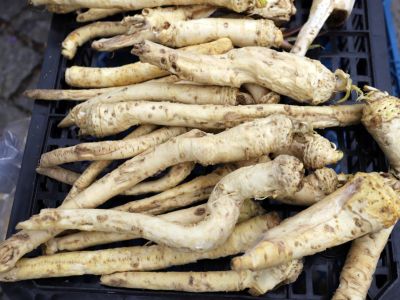What Causes Deformed Parsnips?
Deformed root crops are common in the home garden. Roots may become stunted, twisted, or knotty. Parsnip deformities can also produce forked roots or splits and may break when you try to pull them. The three most common reasons are improper soil preparation, over fertilizing, and root knot nematodes.
Parsnips do best when direct seeded into fertile, well-worked soil. Garden beds full of rocks, clumps, and other debris aren’t suitable for growing parsnips. The soil needs to be broken up and loose to prevent parsnip deformities. When you use compost as a fertilizer, be sure the fertilizer is completely finished and free of clumps that can cause parsnips to misshape as they try to push through the thick clots. The tiny root knot nematode is the most common cause of parsnip deformities. If you find your roots are knotty when growing parsnips, the cause is likely from this soil organism. Nematodes overwinter in soil and their feeding activity stimulate the plant cells to form galls on the roots. These galls prevent the plant from accessing adequate water and nutrients, which then stunt the plant. Root knot nematodes are less active in cold temperatures, so overwintering parsnips is a good way to help prevent damage from the pests. While almost impossible to see nematodes, you can sometimes find the female’s pin-sized head in damaged roots, but identification is usually from already deformed parsnips.
Preventing Misshapen Parsnip Root
Soil preparation by tilling and incorporating organic matter loosens the soil to expose nematodes to the elements and adds predatory organisms to the bed that will eat the nematodes. Where soils are heavy, dig down at least 6 inches (15 cm.) and use leaf litter or other carbon rich organic to help loosen soil. In addition to proper soil preparation, crop rotation is an important step in preventing misshapen parsnip roots. Finally, choose a parsnip seed that is resistant to root knot nematode. If you purchase seedlings, make sure they are certified nematode-free. Keep the seedbed weed-free. Water well and fertilize lightly to promote a healthy plant that is more resistant to pests and cultural problems.
